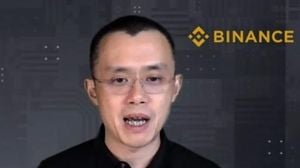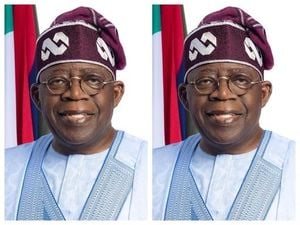The global trade landscape is bracing for another high-stakes confrontation as the United States, China, and the European Union grapple with mounting tensions over rare earth metals, export controls, and the future of critical industries. This week, President Donald Trump confirmed that he will meet Chinese President Xi Jinping on the sidelines of the Asia-Pacific Economic Cooperation (APEC) Summit in Busan, South Korea—a meeting that comes at a moment of extraordinary strain between the world’s two largest economies. While the summit itself is meant to foster regional cooperation, the mood could hardly be described as harmonious. In fact, the issues on the table are so complex and contentious that few analysts expect a sweeping breakthrough.
At the heart of the dispute are rare earth metals and high-tech materials—resources that are absolutely vital for manufacturing electric vehicles, advanced electronics, and defense equipment. According to South Florida Reporter, China recently expanded its export licensing and restrictions on these materials, a move that caught Washington off guard and sent shockwaves through global markets. The United States, for its part, is determined to push Beijing to ease these controls, but China is standing its ground, signaling that it has no intention of backing down easily.
The stakes could hardly be higher. President Trump, never one to shy away from bold rhetoric, has threatened to impose sweeping tariffs—potentially as high as 100% on Chinese exports—if an agreement isn’t reached. He’s also pressing China to ramp up purchases of U.S. goods, particularly soybeans and other agricultural products, while demanding greater access for American companies in key Chinese sectors. In addition, the U.S. is seeking a crackdown on shipments of fentanyl precursor chemicals, linking the trade talks to broader concerns about public health and safety.
But trade is only part of the story. The U.S. has also imposed export controls on semiconductors and advanced technologies destined for China, citing national security concerns. This, in turn, has become a major sticking point for Beijing, which may use its own leverage over rare earths as a bargaining chip. As South Florida Reporter points out, the power dynamic between the two countries is shifting, and neither side appears ready to blink first. Geopolitical flashpoints like Taiwan and regional alliances are casting a long shadow over the negotiations, ensuring that the talks are about far more than just economics.
Analysts are not optimistic about the prospects for a comprehensive deal. As one expert put it, this meeting may be “a data point, not an inflection point”—in other words, a moment to take stock rather than a dramatic turning point. Both leaders have their own domestic audiences to consider. For Trump, the summit is a chance to showcase his deal-making prowess and project strength on the world stage. For Xi, it’s an opportunity to reinforce China’s sovereignty and demonstrate the country’s readiness to resist outside pressure. The world, meanwhile, is watching closely, aware that even a modest agreement—or a complete deadlock—could have far-reaching consequences.
Europe, too, finds itself caught in the crossfire. In early October 2025, China introduced new export restrictions on rare earth magnets and the raw materials needed to produce them, according to Politico as reported by UNN. The move has intensified trade tensions not only with the United States but also with the European Union, whose industries are almost entirely dependent on Chinese imports of these critical materials. The risk of a supply crisis is no longer theoretical—it’s already knocking at Europe’s door.
EU Trade Commissioner Maroš Šefčovič has made it clear that the bloc is not interested in escalating tensions, but he also emphasized the urgent need for a swift and decisive resolution. “A quick solution is extremely necessary,” Šefčovič told reporters, underscoring the gravity of the situation. The EU is now scrambling to secure stable supplies of strategic raw materials, both from within Europe and from reliable international partners. Meanwhile, Chinese Minister of Commerce Wang Wentao is expected to arrive in Brussels in the coming days for consultations, as both sides seek to intensify contacts at all levels to address the crisis.
But Europe isn’t going it alone. The EU is actively coordinating with G7 countries to develop a unified response, with a ministerial meeting scheduled for October 30-31, 2025, in Canada. The goal is to present a coordinated front and reduce the vulnerability of European and allied industries to future supply shocks. The stakes are enormous: without access to rare earths and related technologies, Europe’s ambitions for electric mobility, renewable energy, and advanced manufacturing could be severely undermined.
China’s latest restrictions go beyond simply limiting exports. According to Politico, Beijing has banned the export of technologies related to the extraction of rare earth metals, the production of magnets, and their processing without explicit government permission. This move has been interpreted as an attempt to maintain tight control over the entire supply chain, from raw materials to finished products. For European and American companies, this presents a daunting challenge—one that will require both immediate action and long-term strategic planning.
What’s driving this new wave of export controls? For China, the answer is partly economic but also deeply strategic. By asserting control over rare earths and advanced materials, Beijing gains significant leverage in its dealings with both Washington and Brussels. These materials are not just commodities; they are the building blocks of tomorrow’s technologies, from electric vehicles to 5G networks to guided missiles. In this context, China’s willingness to use its dominance as a bargaining chip is hardly surprising.
For the United States, the response has been to double down on its own restrictions, particularly in areas like semiconductors and high-tech manufacturing. The Biden administration—like its predecessor—has argued that limiting China’s access to cutting-edge technology is essential for national security. But this tit-for-tat approach risks escalating the conflict further, with potential consequences for global supply chains and economic growth.
Europe, meanwhile, finds itself in a delicate position. While the EU is eager to avoid a full-blown trade war, it also recognizes the need to reduce its dependence on Chinese imports. Policymakers are calling for new investments in domestic mining, recycling, and research, as well as partnerships with other countries that can supply critical raw materials. The coming weeks will be crucial as European leaders weigh their options and seek to strike a balance between economic interests and strategic autonomy.
As the world’s most powerful leaders prepare to meet in Busan, the stakes could hardly be higher. The outcome of these talks—however modest—will shape the future of global trade, technology, and security for years to come. Whether the result is a fragile truce or a deepening divide, the world will be watching every move.




